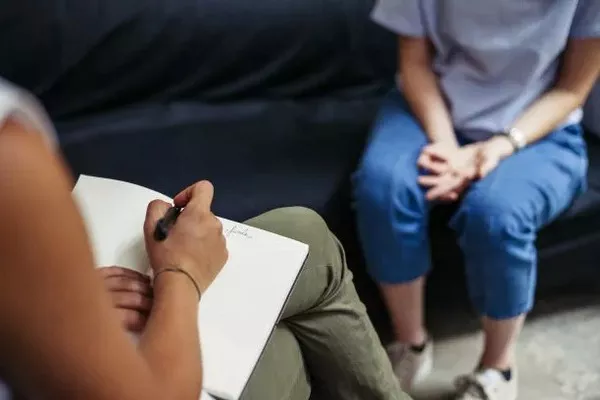Meagan Brown, a Winnipeg-based artist with ADHD, is leveraging her creative talents not only to make a living but also to address the stigmas associated with her neurodivergence. Her work is currently on display at an exhibition hosted by Artbeat Studio on Albert Street, where she shares her unique perspective on mental health.
Reflecting on her artistic process, Brown noted, “There were certain times I would have a pretty much finished piece in my hand and look at it and think, ‘Wow, I don’t have the same feelings about some of these things as I did before.’”
One of her standout pieces features a comic strip-style illustration depicting a figure chipping away at a pillar labeled “negative self.” Brown explained, “It’s really about taking these unbelievably strong core beliefs of negative self that have broken up, and doing the work to chip away at this and turn all this self-hate and negative self-image into self-love. Every little bit you take off of that negative self-image becomes at least self-acceptance to begin with, and eventually self-love.”
Another significant work, titled Shame Distorts the Self, explores the relationship between negative self-image and negative self-talk. Brown shared a personal revelation that emerged during her creative process: “I realized I developed a tic over the past sort of three or four years of audibly saying, ‘I hate you’ to myself out loud, which is a bit horrifying. As I was working on this piece and finishing it, I realized that it is an intrusive thought that has now replaced a more dark and destructive intrusive thought.”
Kayla Cardinal, Executive Director of Winnipeg Art Therapists, affirmed the therapeutic value of art in addressing mental health challenges. “Art is an excellent way to work through mental health issues,” she said. “You would be able to notice the deeply buried inner conflicts that you might not be able to verbalize, but rather you can work through them, see them, and then do something with them.”
Cardinal emphasized that art therapy is accessible to everyone, regardless of artistic ability. “It could be painting, drawing, sculpting, acting, or dance. Any expressive medium can help transfer internal feelings to the external world. One of my favorite activities is something called an energy sketch, where you simply scribble what’s going on internally, using color, form, and shape to externalize that energy onto the page.”
Brown echoed Cardinal’s sentiments about the cathartic nature of this creative expression. “The time and the physicality of transferring feelings into something physical—even if it’s hurt—expressed as color is key,” she said.
In a time when accessing traditional mental health services can be challenging, Cardinal highlighted the flexibility of art therapy. “I wouldn’t necessarily encourage you to be your own art therapist, especially when there’s a lot of free art therapy available for you, whether locally or virtually. I hope that if anything, you reach out just for one session, just to gain more information about available resources.”
Artbeat Studio aims to make therapeutic art experiences accessible to all. Uyen Pham, the studio’s executive director, stated, “We provide studio spaces and connections for artists or people with lived mental health experience to have that space to really heal. It’s a space where we talk about mental health freely and encourage all of our artists and participants to do that as well.”
The non-profit organization offers free sessions during the summer and collaborates with various organizations, including the Victoria Hospital Foundation. By showcasing her work at Artbeat Studio, Brown hopes to inspire others and contribute to a broader dialogue about mental health.
“I think breaking down the shame and the stigma is really one of the best things right now. Having conversations and getting more people involved is essential,” she said.
Related Topics:





























